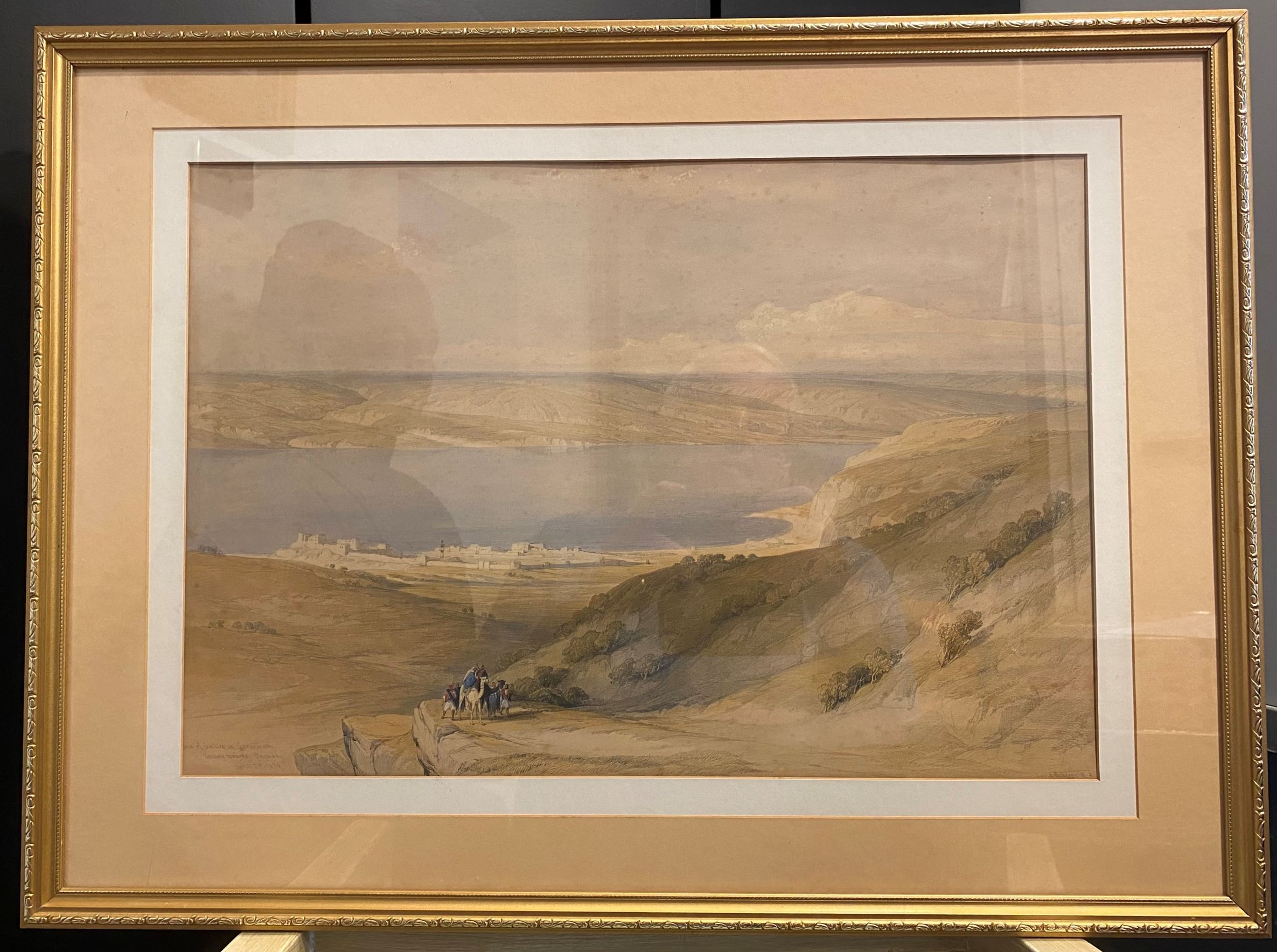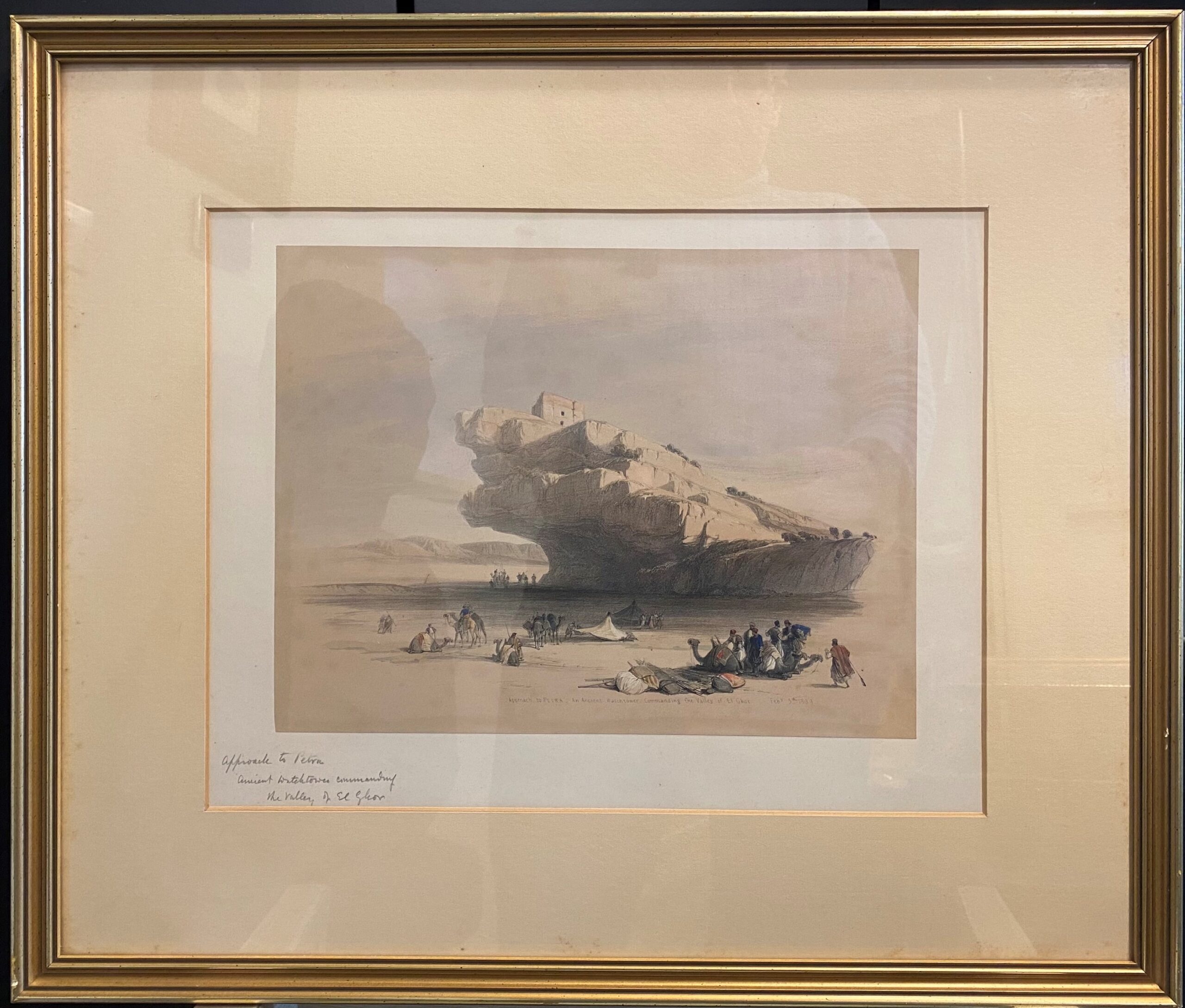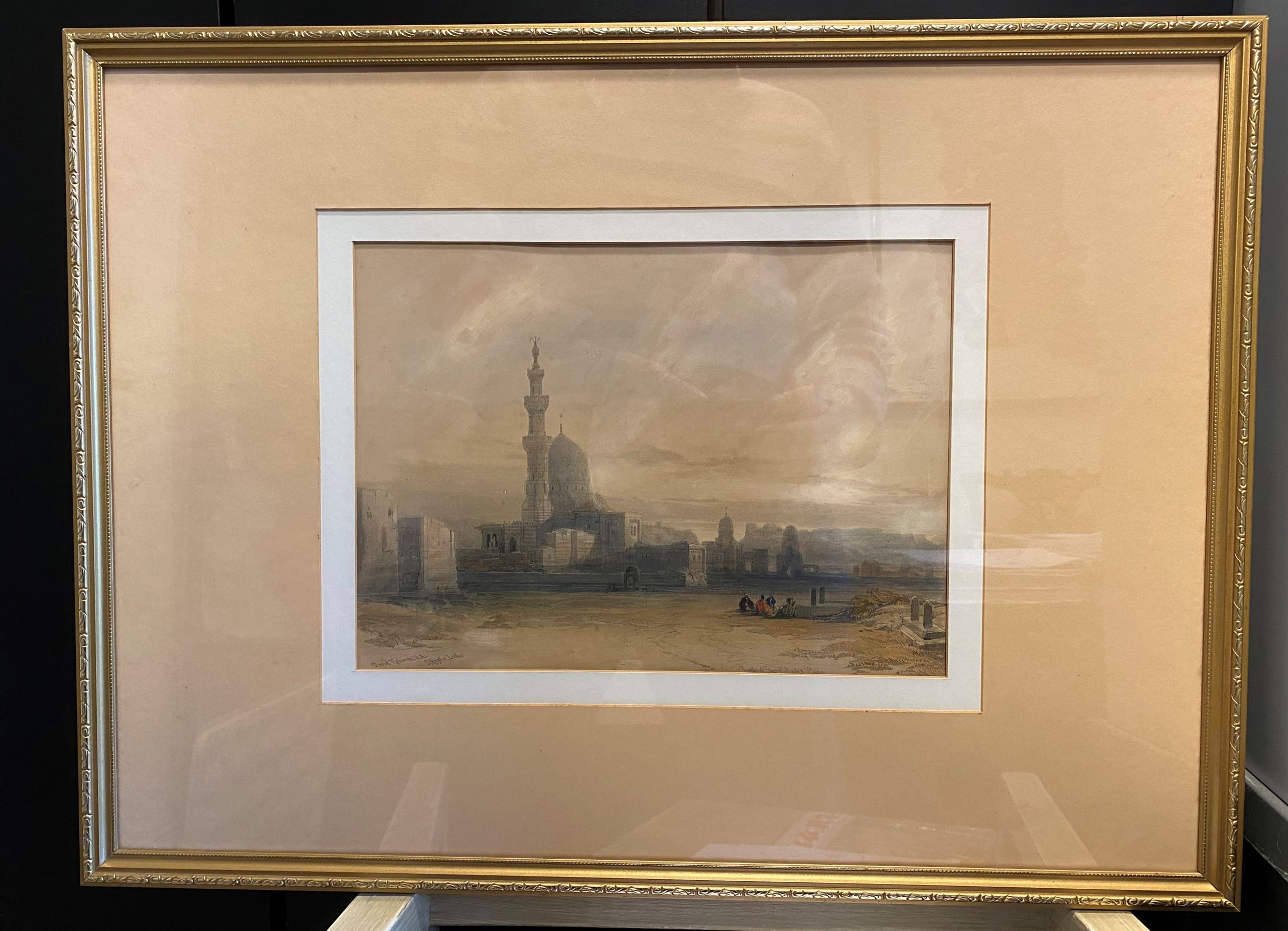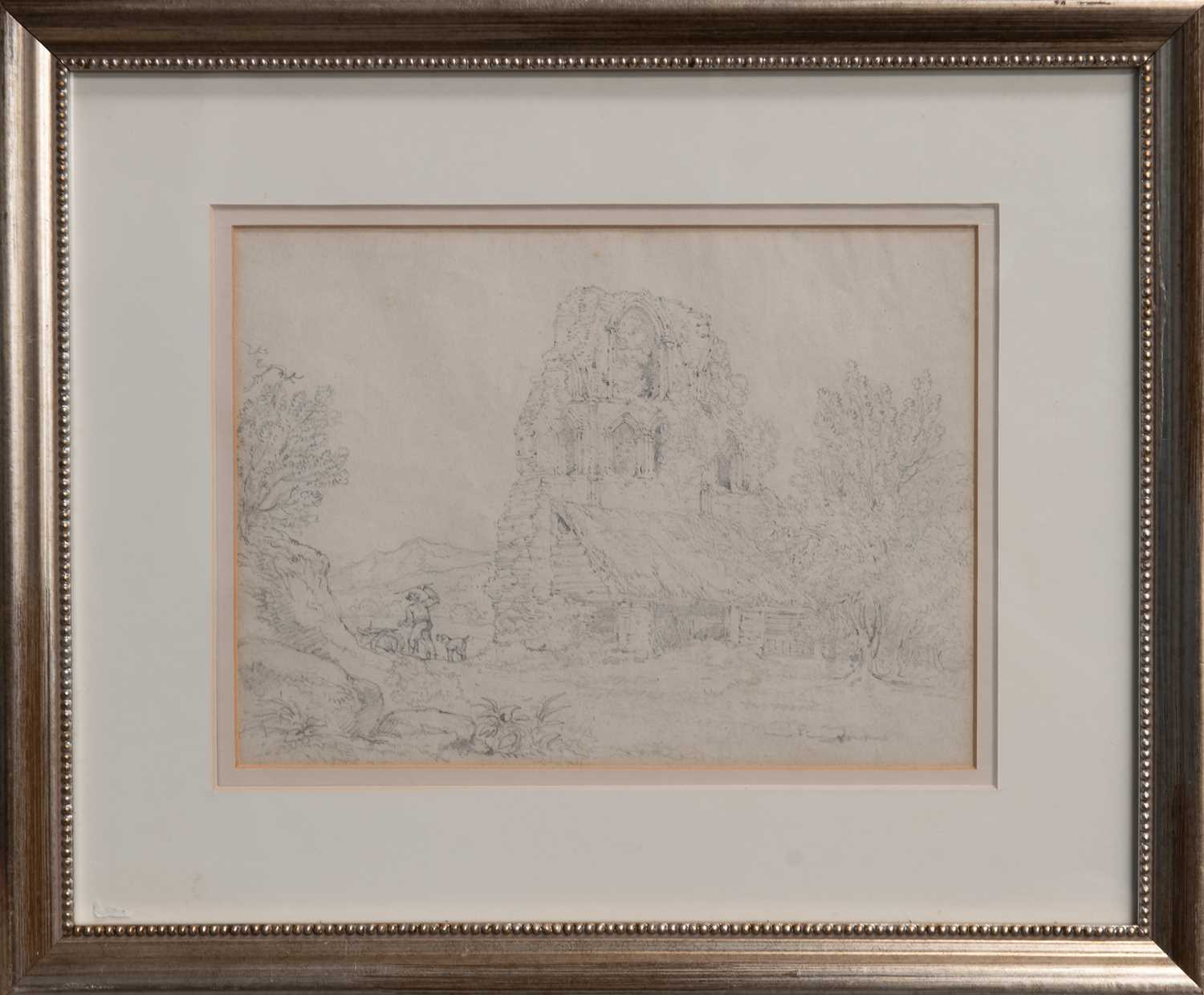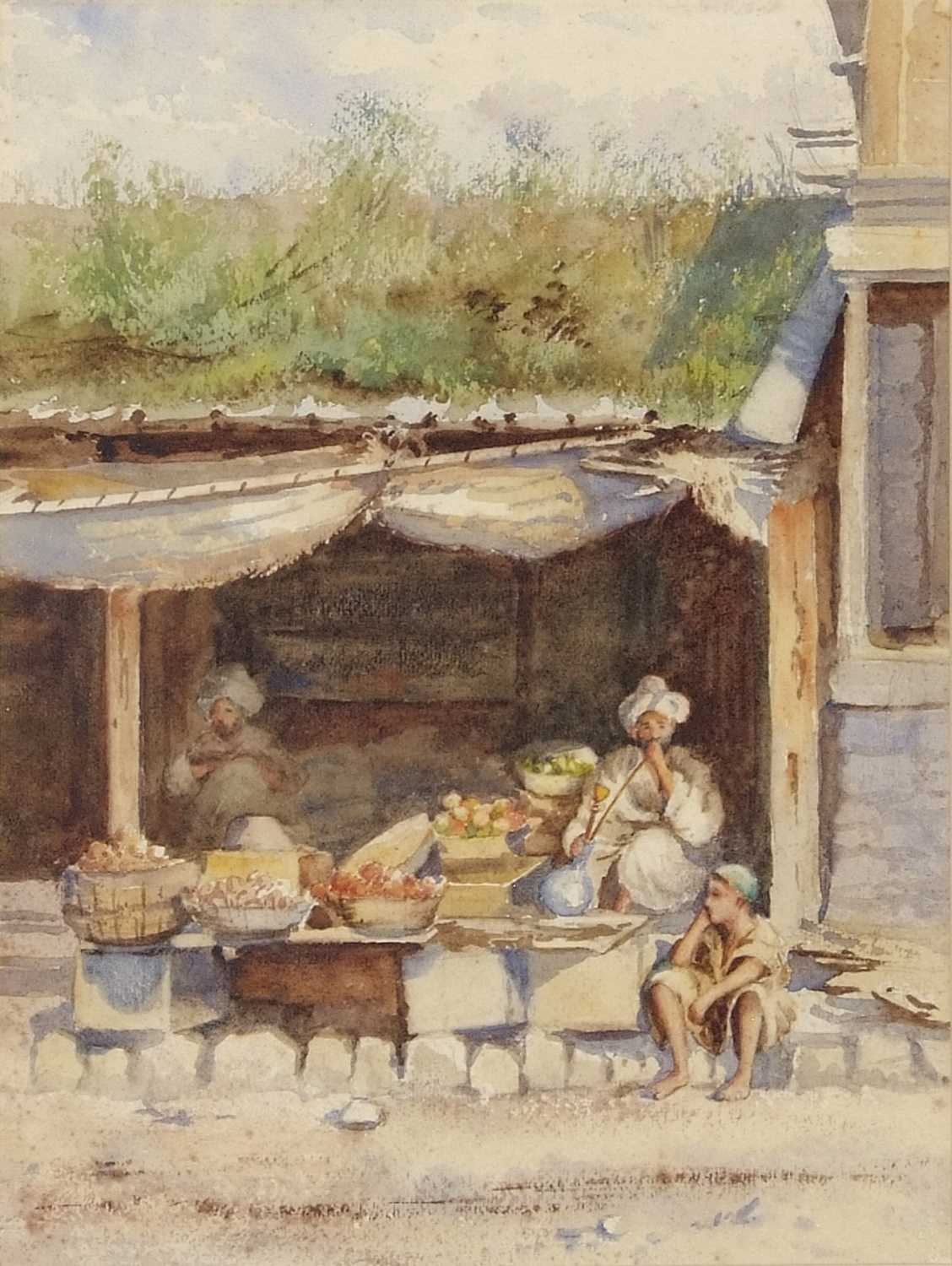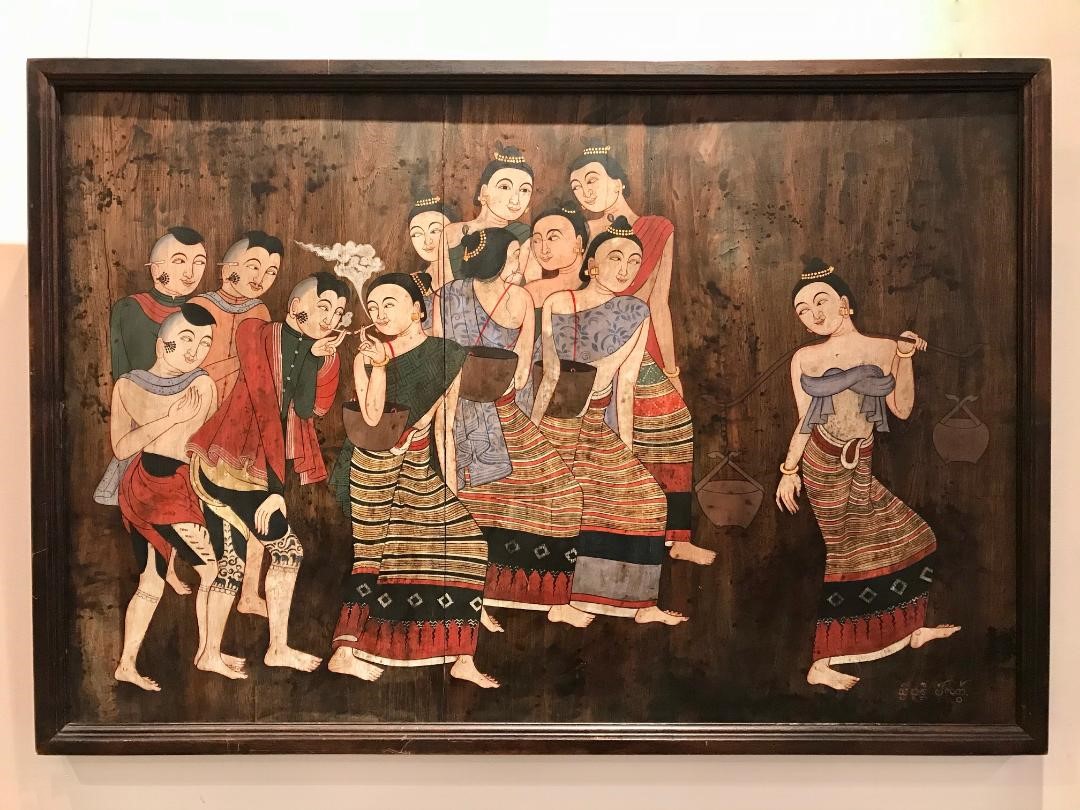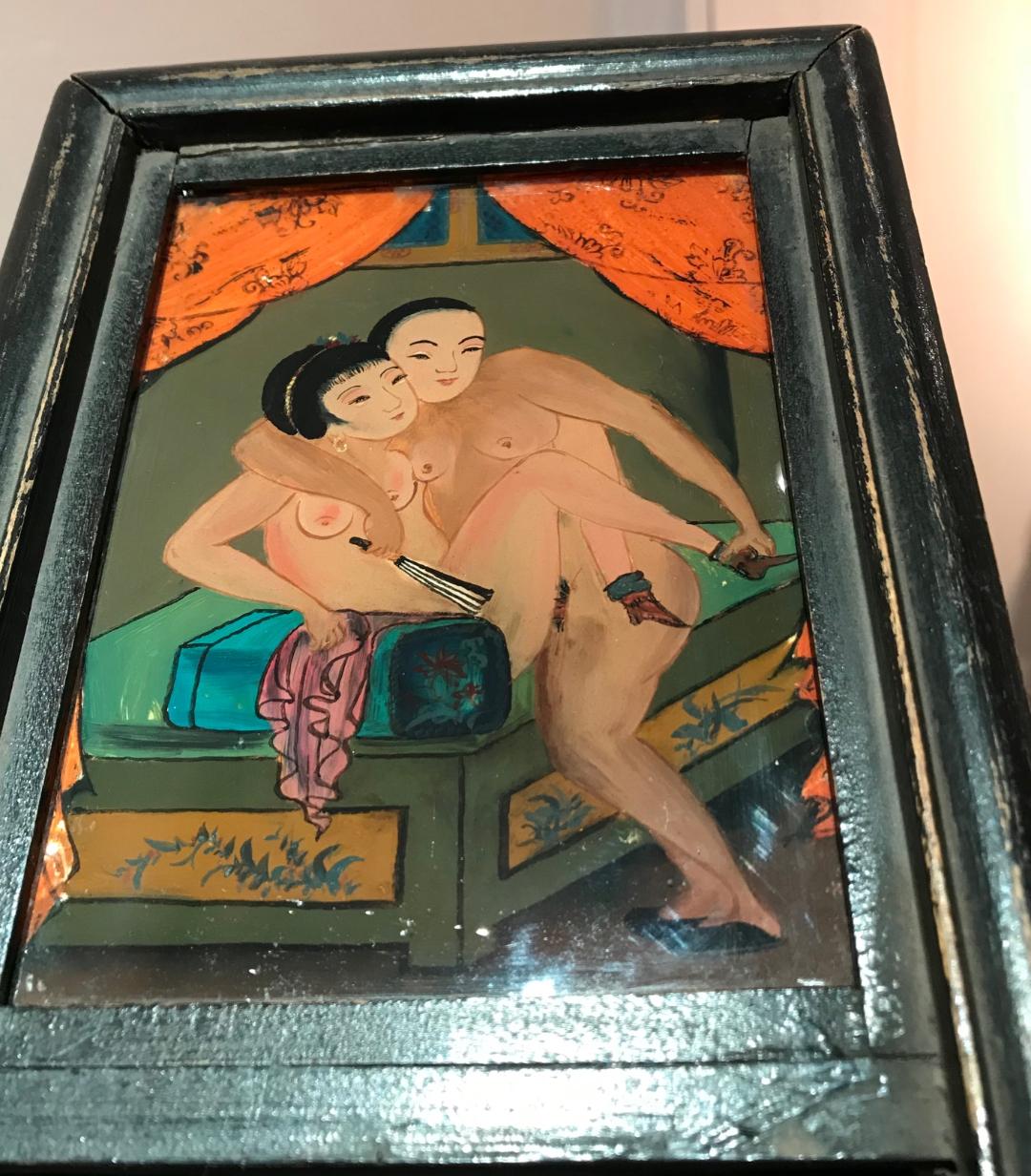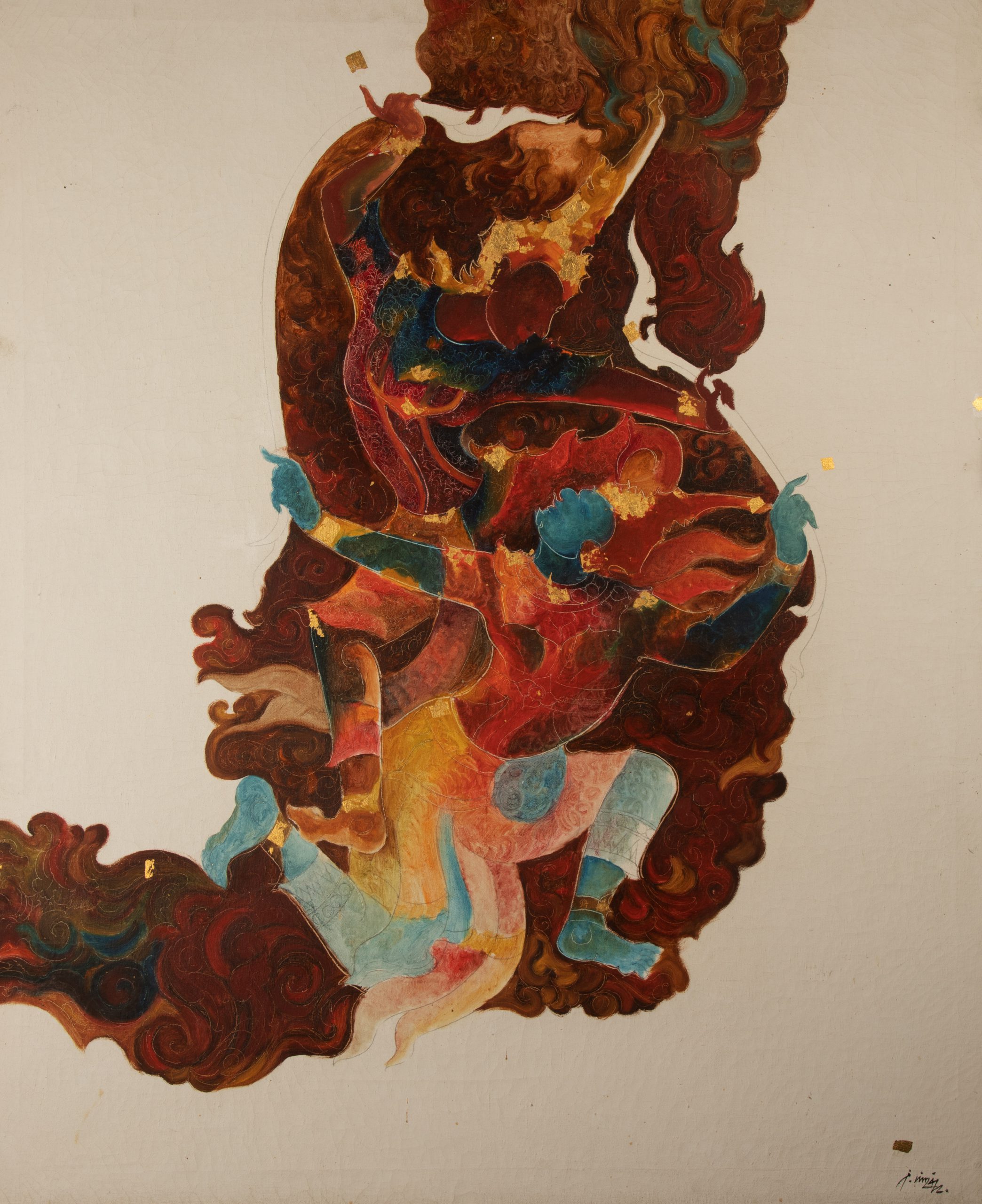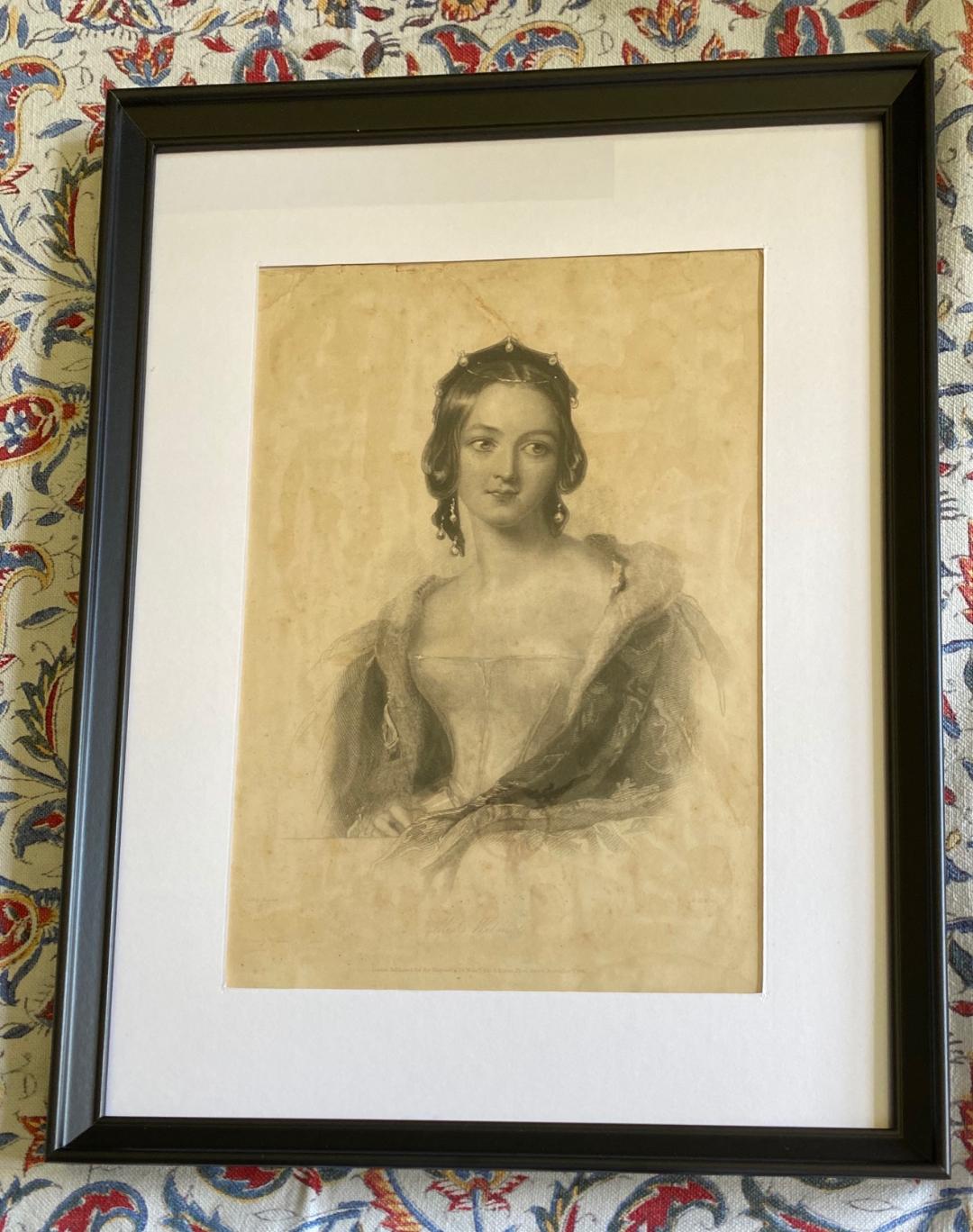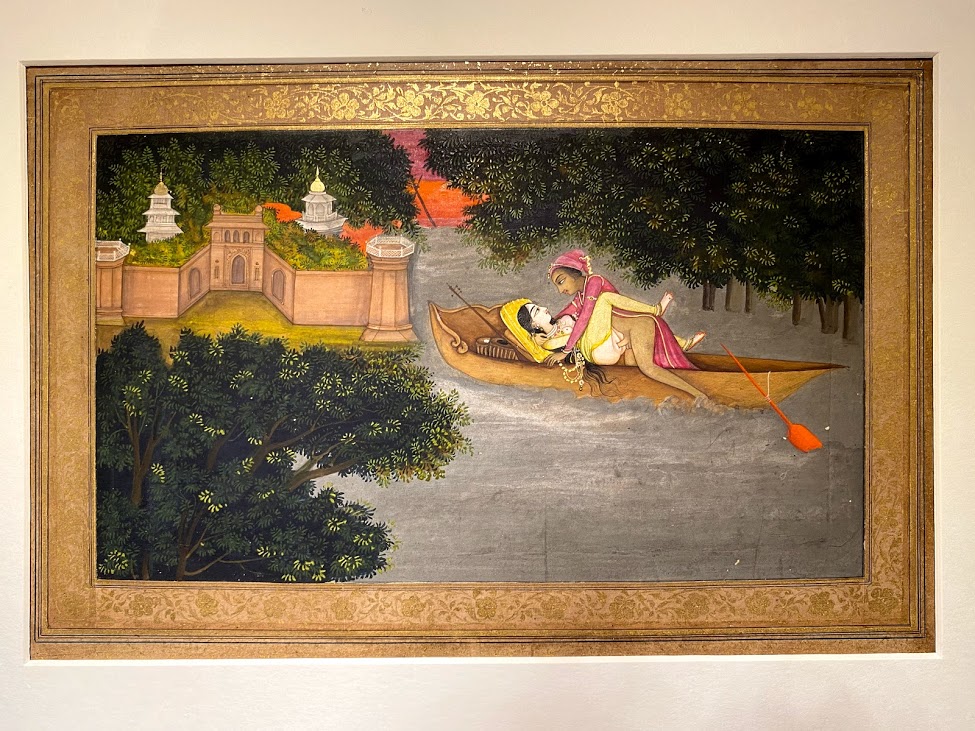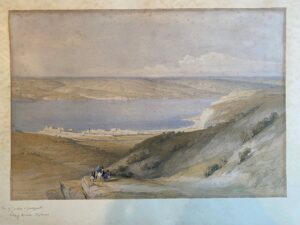
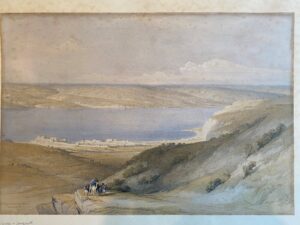
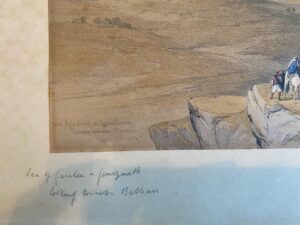
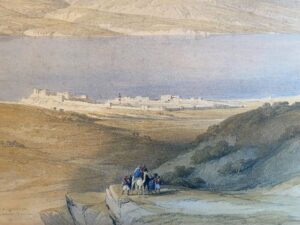
ST1186.2 ‘SEA OF GALILEE AT GENEZARETH, LOOKING TOWARDS BASHAN,
APRIL 21ST 1839′
ORIGINAL HAND-COLOURED LITHOGRAPH BY DAVID ROBERTS (1796 – 1864)
LITHOGRAPHED BY LOUIS HAGHE
FRAMED AND GLAZED
IMAGE SIZE: 33 CMS, 13 INS X 48 CMS,19 INS
FRAME SIZE: 48 CMS, 19 INS X 65 CMS,25 ½ INS
David Roberts RA RBA (24 October 1796 – 25 November 1864) was a Scottish painter. He is especially known for The Holy Land, Syria, Idumea, Arabia, Egypt, and Nubia, a prolific series of detailed lithograph prints of Egypt and the Near East that he produced from sketches he made during long tours of the region (1838–40). These and his large oil paintings of similar subjects made him a prominent Orientalist painter. He was elected as a Royal Academician in 1841.
J. M. W. Turner persuaded Roberts to abandon scene painting and devote himself to becoming a full-time artist. Roberts set sail for Egypt on 31 August 1838, a few years after Owen Jones. His intent was to produce drawings that he could later use as the basis for the paintings and lithographs to sell to the public. Egypt was much in vogue at this time, and travellers, collectors and lovers of antiquities were keen to buy works inspired by the East or depicting the great monuments of ancient Egypt.
Roberts made a long tour in Egypt, Nubia, the Sinai, the Holy Land, Jordan and Lebanon. Throughout, he produced a vast collection of drawings and watercolour sketches.
On his return to Britain, Roberts worked with lithographer Louis Haghe from 1842 to 1849 to produce the lavishly illustrated plates of The Holy Land, Syria, Idumea, Arabia, Egypt, and Nubia, originally published as Sketches in the Holy Land and Syria, 1842–1849 and Egypt & Nubia series. He funded the work through advance subscriptions which he solicited directly. The scenery and monuments of Egypt and Holy Land were fashionable but had hitherto been hardly touched by British artists, and so Roberts quickly accumulated 400 subscription commitments, with Queen Victoria being subscriber No. 1. Her complete set is still in the Royal Collection. The timing of publication just before photographs of the sites became available proved fortuitous.
[Source: Wikipedia]
Petra, originally known to its inhabitants as Raqmu or Raqēmō, is a historic and archaeological city in southern Jordan. It is adjacent to the mountain of Jabal Al-Madbah, in a basin surrounded by mountains forming the eastern flank of the Arabah valley running from the Dead Sea to the Gulf of Aqaba. The area around Petra has been inhabited from as early as 7000 BC, and the Nabataeans might have settled in what would become the capital city of their kingdom as early as the 4th century BC. Archaeological work has only discovered evidence of Nabataean presence dating back to the second century BC, by which time Petra had become their capital. The Nabataeans were nomadic Arabs who invested in Petra’s proximity to the incense trade routes by establishing it as a major regional trading hub.
[Source: Wikipedia]
Provenance: Private English collection.
 Go back to Works of art
Go back to Works of art